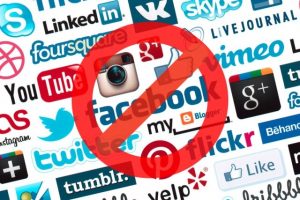“You know, as most entrepreneurs do, that a company is only as good as its people. The hard part is actually building the team that will embody your organizational culture and propel you forward.” — Kathryn Minshew, Founder & CEO at The Muse
Organizational culture doesn’t mean that you own the trendiest or coolest business — it means that you operate a positive workplace with a strong values and an even stronger identity, a place that drives business success.
The key to organizational culture? Healthy and engaged employees who believe in their company’s core mission — employees who feel heard, are recognized, and encouraged to become the best that they can be.
The connection between organizational culture and business success
Harvard Business Review released, The Culture Factor, a guide intended to help organizations better determine and shape their company culture in order to fit their strategy. The guide dives into how organizational culture drives core goals through specific beliefs and values, which in turn, influences employee behavior and activity. Having a culture strategy in place will provide employees greater clarity and focus, resulting in stronger productivity and business results.
According to a Grant Thornton LLP and Oxford Economics study, executives who say their culture is extremely healthy are 1.5 times more likely to report average revenue growth of more than 15 percent over three years. In addition, among public companies, those with extremely healthy cultures are nearly 2.5 times more likely to report significant stock price increases over three years.
Companies clearly care about revenue and their people, but are likely not looking at culture as a way to grow both. This is short-sighted … Our study shows that, in fact, investing in culture can help companies grow and thrive financially, and keep employees for a longer time period.” – Erica O’Malley, Grant Thornton partner
Once you develop a strong company culture, it will be easier to not only retain employees, but also attract new top talent. It is well understood that a high employee turnover is costly. According to Gallup, 51 percent of employees are considering a new job – which means that they’re not fully engaged in their current position; and as reported by the Center for American Progress, once an employee leaves, it can cost a company anywhere between 16 percent to 213 percent of that lost employee’s salary. Avoid the high cost of turnover by focusing on your organizational culture. After all, employees who don’t like their organization’s culture are 24 percent more likely to quit.
Also, organizational culture plays a key role when it comes to attracting top talent. Currently, most job seekers are screening potential employers by their company culture with 46 percent of candidates saying they believe culture is very important in the application process and 15 percent of job seekers turning down a job offer because of the company’s culture. Don’t lose sight of the numerous positive benefits your business can gain from building a strong organizational culture.

Three pillars of a strong workplace culture
It is well established that the companies who develop and maintain the strongest organizational cultures have much lower turnover rates and greater long-term success. In order to begin building a more defined, positive workplace culture, it’s important to consider the following factors.
1. Live and breathe recognition
Employees desire recognition, and based on an Achievers’ study, 82 percent of employees wish they received more recognition and 90 percent say when they receive recognition it motivates them to work harder. Start recognizing and rewarding your employees on a regular basis to show frequent appreciation and reinforce key behaviors. In the same study, 92 percent of employees agree when they’re recognized for a specific action, they’re more likely to take that action again in the future.
By recognizing valued employees, both the employer and employee benefit. The key is to reinforce positive behaviors and show appreciation on a frequent basis; as your employees continue flexing their strengths and feel ongoing appreciation, your business will grow as a result. Together, you can both succeed. If you’re a manager, it’s important to note that 58 percent of employees said their manager relationship would improve with more recognition.
For example, after Discover implemented a global recognition program, powered by Achievers, the company saw sales, customer satisfaction, and retention improve. Joanna Kalantzis, Senior Manager of Internal Communications and Engagement and Discover stated:
“Our sales have increased, customer satisfaction has improved, and our voluntary attrition has decreased since the time of launching our Achievers platform.”
Discover + Achievers: Employee Engagement Partners
Bottom line: Employee recognition drives employee engagement, and employee engagement drives business success.
2. Listen to your employees and take action
In addition to employee recognition, gathering employee honest feedback is critical. Encourage two-way feedback: As your leaders provide ongoing feedback to their teams, your employees should also be able to provide frequent feedback to their managers. When managers receive feedback, make sure they take action on it to show they are truly listening to their team. Currently, 23 percent of workers say their company and manager are “horrible” at acting on feedback. Employees want to know their company is listening to them and those who feel they are heard are 4.6 times more likely to feel empowered, and in turn, are more likely to perform to the best of their ability.
Did you know only 39 percent of organizations believe employees know how their work connects to company goals? Leverage employee feedback tools to discover new pain points in your organizational culture and address them immediately. Employee input is the best resource to start creating an effective culture that works.
Bottom line: Open channels for employees to provide regular feedback regarding their employee experience.
3. Communicate with intent
Employees want to feel valued — they want to feel as though they are truly a part of something greater. In order to maintain a strong team unit, communication is imperative. How can employees perform to the best of their ability while driving your company’s strategy if they aren’t aligned with their organization’s mission?
Leaders must offer transparency to their teams by providing regular updates and highlighting company values. The key here is boost workplace productivity (and workplace happiness) through better communication.
Bottom line: As stated by John Adair, “Communication is the sister of leadership.” For those who simply communicate within a company, they will get by. However, those who communicate skillfully and with intent, will be able to maximize company success — especially in regard to employee engagement.
As you strategize new ways to build your company culture, take our top tips with you. Organizational culture can be your competitive edge and take your business to new heights.
Did you know nearly half (45 percent) of workers say leadership is “minimally” or “not at all” committed to improving company culture? Discover culture alignment techniques that drive business performance by accessing our webinar.
Business & Finance Articles on Business 2 Community
(34)









